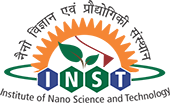The computation of antiferromagnetic exchange coupling constants J by means of efficient density-based approaches requires in practice to take care of both spin projection to approximate the low spin ground state and proper localization of the magnetic orbitals at the transition metal centers. This is demonstrated here by a combined approach where the extended broken–symmetry (EBS) technique is employed to include the former aspect, while spin density constraints are applied to ensure the latter. This constrained EBS (CEBS) approach allows us to carry out ab initio molecular dynamics on a spin-projected low spin potential energy surface that is generated on-the-fly by propagating two coupled determinants and thereby accessing the antiferromagnetic coupling along the trajectory. When applied to the prototypical model of the oxidized [2Fe-2S] cofactor in Ferredoxins, [Fe2S2(SH)4]2−, at room temperature, CEBS leads to remarkably good results for geometrical structures and coupling constants J.


Recent Comments
Hello world!
A WordPress CommenterInterdum luctus accu samus habitant error nostra nostrum
Fletch SkinnerInterdum luctus accu samus habitant error nostra nostrum
Chauffina CarrDoloremque velit sapien labore eius lopren itna
Hans DownBloke cracking goal the full monty get stuffed mate posh.
Fletch Skinner